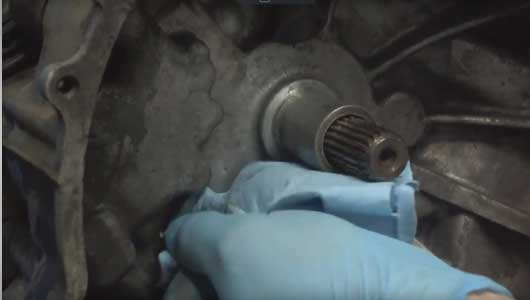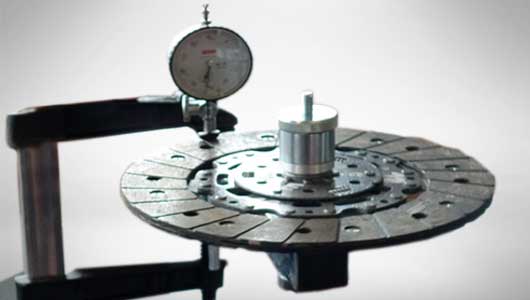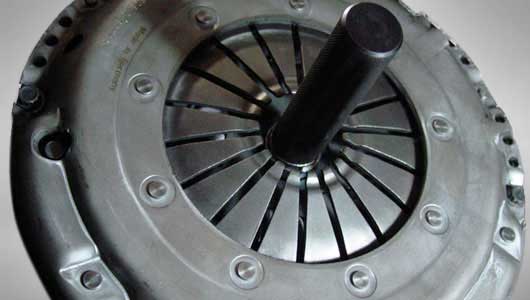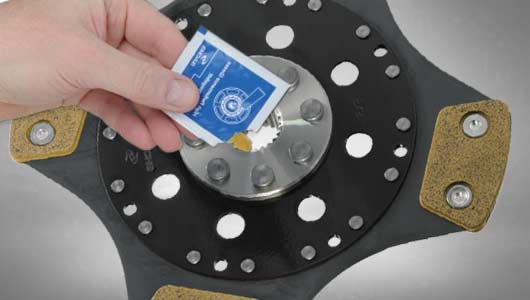Professional clutch replacement
As a link between engine and transmission, the clutch is an indispensable component.

Professional clutch replacement.
Replacing the clutch of a manual transmission so expertly that the gears can be perfectly shifted again is mere routine for an automotive technician.
However, as manufacturer analyses of some clutches that are subject to complaint show there are exceptions in certain cases.
In these cases, the damage pattern proves that observing only a few decisive details during component replacement mostly means that a lot of time and high costs can be saved and unhappy customers can be avoided.
Cleaning all relevant parts

Prior to the installation of new clutches, you have to clean the inside of the bell housing as well as all components of the clutch actuation system, e. g. the clutch release fork, the guiding sleeve for the clutch release bearing, and also the transmission input shaft including the multi-gear spline.
This is the only way to identify potential signs of wear on these parts which adversely affect the release behavior of the new clutch. If such signs are identified, the described components must be replaced as well.
Don't forget the axial runout test

Spare parts from manufacturers of proprietary goods are carefully produced according to state-of-the-art production standards. However, particularly precision components such as clutches may be damaged due to improper handling during transport to the workshop. The packaging condition is a first indication.
Therefore, an axial runout test of the clutch disk should be performed prior to each clutch installation, even if this is not suggested in the service plan. Since clutch actuation is a very precise process, the facings' axial runout must not be significantly above 0.5 millimeters. Otherwise, shifting is very difficult or entirely impossible.
Precisely centering the clutch disk

If the clutch disk is precisely centered even before it is pressed on by the clutch pressure plate, this means easier installation of the transmission: You have minimized the risk of damaging and/or deforming the hub spline of the clutch disc in the process.
The tolerance between the transmission input shaft and the hub spline is only a few hundredths of a millimeter. Even minimal deformation during insertion of the transmission input shaft reduces the mobility of the clutch disc that is required for later declutching.
Keeping clutch facings clean

The clutch function and, therefore, the shifting characteristics are further improved if even specially coated hub splines are coated with the special grease included in the delivery prior to installation ‑ suitable tools would be a brush or toothbrush, for instance. In order to avoid clutch grab, excess lubricant must always be removed and the clutch facings must be kept perfectly clean. For the same reason it is recommended to additionally clean the friction surfaces of the flywheel and the pressure plate.

 English
English







